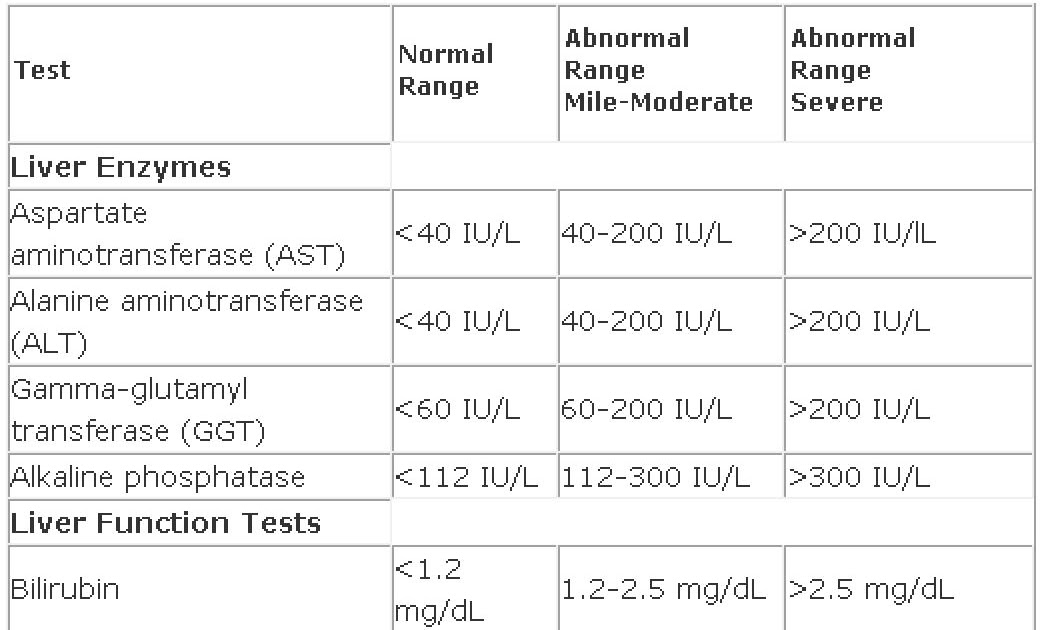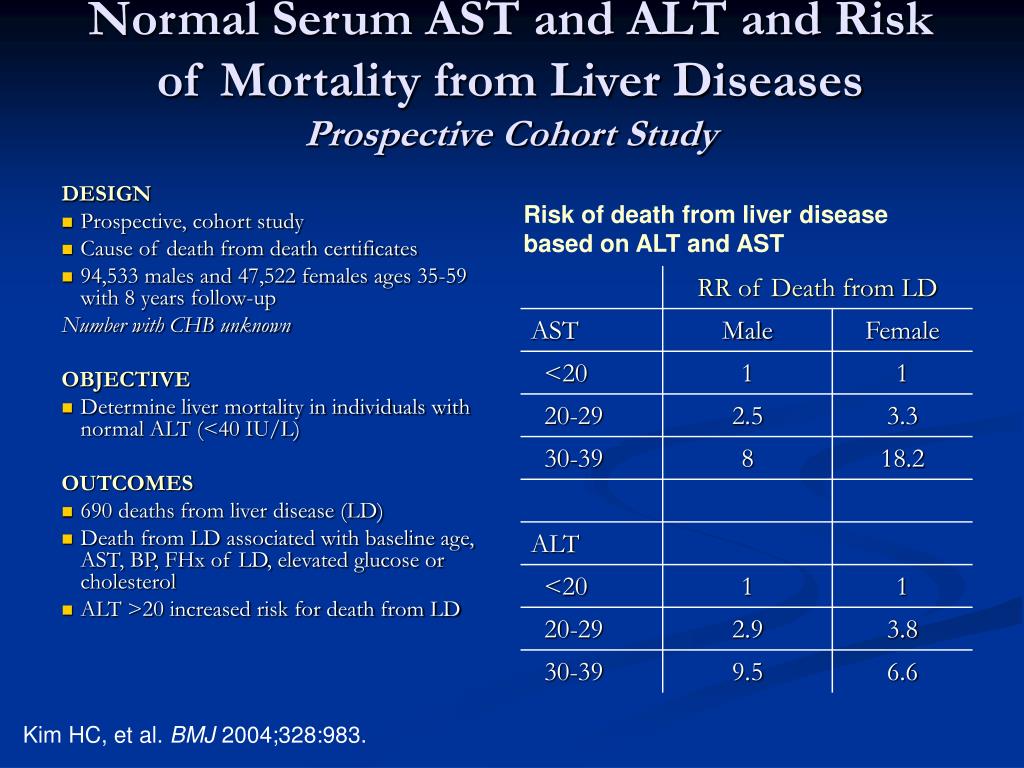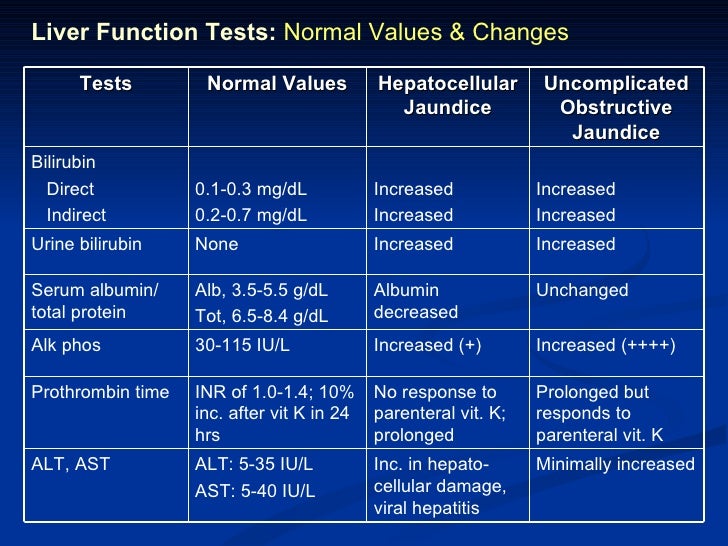Alt liver normal range. ALT Liver Enzymes: Understanding Normal Ranges, High and Low Results, Symptoms, and Causes
What are ALT liver enzymes. How are ALT levels measured. What is considered a normal ALT range. What causes high ALT levels. What are the symptoms of elevated ALT. How are low ALT levels interpreted. When should you be concerned about your ALT results.
What is ALT and Why is it Important for Liver Health?
Alanine aminotransferase (ALT) is an enzyme primarily found in liver cells that plays a crucial role in metabolism and protein breakdown. ALT levels in the blood are an important indicator of liver health and function. When liver cells are damaged or inflamed, ALT is released into the bloodstream, causing serum ALT levels to rise. This makes ALT testing a valuable tool for detecting liver problems, often before other symptoms appear.
The liver performs several vital functions in the body, including:
- Protein production
- Vitamin and iron storage
- Toxin removal from the blood
- Bile production for digestion
Given the liver’s importance, monitoring ALT levels can provide early insights into potential liver issues and overall health.

The ALT Test: Purpose, Procedure, and Interpretation
An ALT test, also known as a serum glutamic-pyruvic transaminase (SGPT) test or alanine transaminase test, measures the level of ALT enzymes in your blood. This test is typically used to:
- Evaluate liver function
- Screen for liver disease
- Determine the underlying cause of liver problems
- Monitor the progression of liver conditions
The test procedure is straightforward, involving a simple blood draw. Results are usually available within a few days. But how are these results interpreted? What constitutes a normal ALT range?
Understanding ALT Normal Ranges
Historically, the normal range for ALT was considered to be around 40 U per L, with a range from 30 to 50 U per L. However, recent research suggests that these ranges may be too high, potentially missing cases of chronic liver disease. A study by Prati and associates proposed updated, gender-specific healthy ALT levels:
- Men: 30 U per L
- Women: 19 U per L
These new ranges showed improved sensitivity in detecting liver abnormalities, particularly in individuals with chronic hepatitis C virus (HCV). However, the medical community continues to debate the implications of adopting these lower thresholds.

High ALT Levels: Causes, Symptoms, and Implications
Elevated ALT levels often indicate liver damage or inflammation. But what specific conditions can lead to high ALT? Some common causes include:
- Hepatitis (viral or alcoholic)
- Nonalcoholic fatty liver disease
- Cirrhosis
- Medications (e.g., certain antibiotics, statins)
- Alcohol abuse
- Obesity
Symptoms associated with high ALT levels and potential liver problems may include:
- Jaundice (yellowing of skin and eyes)
- Dark urine
- Nausea and vomiting
- Abdominal pain, particularly in the upper right quadrant
- Fatigue
- Loss of appetite
It’s important to note that elevated ALT doesn’t always indicate severe liver disease. Factors like body mass index (BMI), glucose intolerance, and hyperlipidemia can also influence ALT levels. However, persistently high ALT warrants further investigation to determine the underlying cause and appropriate treatment.
Low ALT Levels: What Do They Mean?
While much attention is given to high ALT levels, low ALT can also be significant. Low ALT levels may indicate:

- Vitamin B6 deficiency
- Chronic kidney disease
- Frailty in elderly individuals
However, low ALT is generally less concerning than high ALT and may not require immediate medical attention unless accompanied by other symptoms or health issues.
The Debate Over ALT Normal Ranges: Implications for Diagnosis and Treatment
The proposal to lower ALT normal ranges has sparked debate in the medical community. While lower thresholds could lead to earlier detection of liver problems, particularly in cases of chronic HCV, there are concerns about potential overdiagnosis and unnecessary anxiety for patients.
Dr. Kaplan, in an editorial, suggested three possible approaches:
- Accepting the new lower ALT range
- Adjusting the current ALT range for effects of BMI and sex
- Maintaining current standards
He proposed a combination of the latter two options as a balanced approach. This would account for factors like BMI and sex while avoiding a dramatic increase in the number of patients requiring liver evaluations.
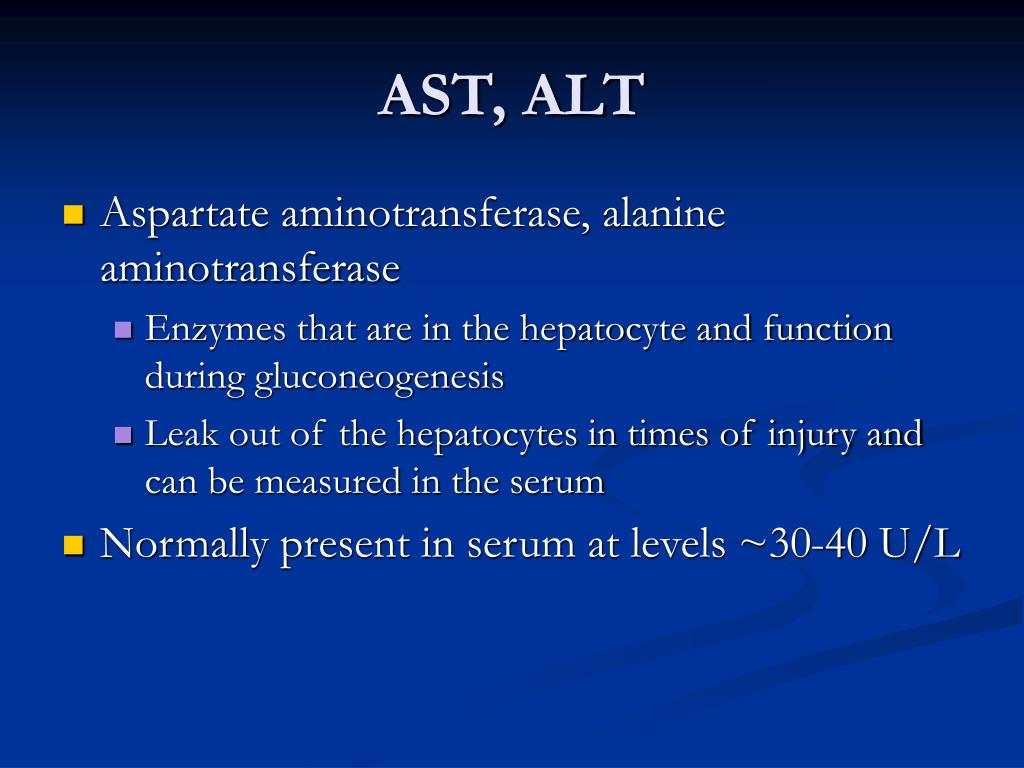
ALT Testing: When and Why It’s Recommended
ALT testing is typically recommended in several scenarios:
- As part of routine health check-ups
- When symptoms of liver disease are present
- To monitor known liver conditions
- To assess the effects of medications that may impact liver function
Your doctor may order an ALT test if you’re experiencing symptoms such as jaundice, dark urine, nausea, vomiting, or abdominal pain. It’s often performed alongside other liver function tests to provide a comprehensive picture of liver health.
Lifestyle Factors Affecting ALT Levels
Several lifestyle factors can influence ALT levels, potentially leading to elevated results even in the absence of liver disease. These include:
- Obesity: Higher BMI is associated with increased ALT levels
- Alcohol consumption: Excessive drinking can damage liver cells and raise ALT
- Diet: High-fat diets may contribute to fatty liver disease and elevated ALT
- Exercise: Intense workouts can temporarily increase ALT levels
- Medications: Certain drugs can affect liver function and ALT levels
Understanding these factors is crucial for accurately interpreting ALT results and making informed health decisions. If you’re concerned about your ALT levels, discussing these lifestyle factors with your healthcare provider can provide valuable context for your test results.

Managing and Improving ALT Levels
If you’ve received high ALT results, there are several steps you can take to improve your liver health and potentially lower your ALT levels:
- Maintain a healthy weight
- Limit alcohol consumption
- Eat a balanced, liver-friendly diet
- Exercise regularly
- Avoid unnecessary medications
- Manage underlying conditions like diabetes or high cholesterol
Always consult with your healthcare provider before making significant lifestyle changes, especially if you have a known liver condition. They can provide personalized advice based on your specific health situation and ALT results.
The Role of Diet in ALT Management
Diet plays a crucial role in liver health and can significantly impact ALT levels. A liver-friendly diet typically includes:
- Plenty of fruits and vegetables
- Whole grains
- Lean proteins
- Healthy fats (e.g., from fish, nuts, and olive oil)
- Limited processed foods and added sugars
Certain foods and supplements have been associated with improved liver function and potentially lower ALT levels. These include coffee, green tea, turmeric, and milk thistle. However, it’s important to approach dietary changes and supplementation under the guidance of a healthcare professional.
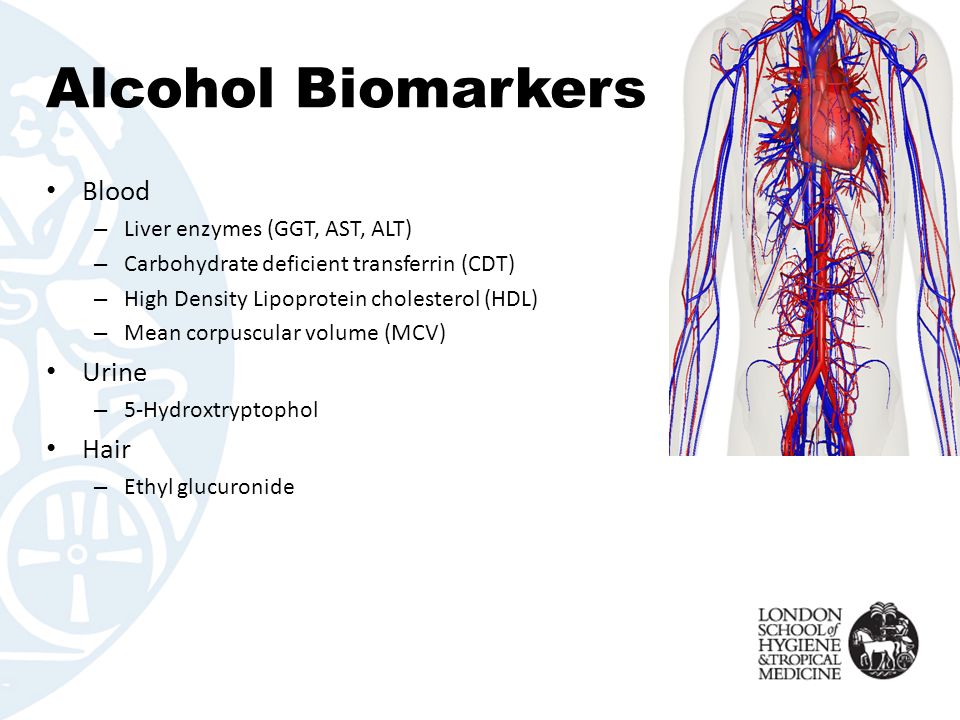
ALT and Other Liver Function Tests: A Comprehensive Approach
While ALT is a valuable indicator of liver health, it’s often used in conjunction with other liver function tests for a more comprehensive assessment. These may include:
- Aspartate aminotransferase (AST)
- Alkaline phosphatase (ALP)
- Gamma-glutamyl transferase (GGT)
- Bilirubin
- Albumin
- Prothrombin time
The ratio of AST to ALT can provide additional insights into the nature and severity of liver problems. For instance, an AST/ALT ratio greater than 2:1 is often associated with alcoholic liver disease.
Interpreting ALT Results in Context
Interpreting ALT results requires considering various factors:
- Age and sex
- Overall health status
- Presence of other medical conditions
- Medications being taken
- Results of other liver function tests
A single elevated ALT result doesn’t necessarily indicate liver disease. Your healthcare provider will consider your complete medical history and may recommend follow-up tests to determine the cause of elevated ALT and develop an appropriate treatment plan.

The Future of ALT Testing and Liver Health Assessment
As our understanding of liver function and disease progresses, the approach to ALT testing and interpretation may continue to evolve. Research is ongoing to:
- Refine ALT normal ranges for different populations
- Develop more sensitive and specific liver function tests
- Explore non-invasive imaging techniques for liver assessment
- Investigate genetic factors influencing ALT levels and liver health
These advancements may lead to more personalized and accurate liver health assessments in the future, potentially improving early detection and treatment of liver diseases.
The Role of Artificial Intelligence in ALT Interpretation
Artificial intelligence (AI) and machine learning are increasingly being applied to medical diagnostics, including the interpretation of liver function tests. AI algorithms can analyze large datasets to identify patterns and correlations that might not be immediately apparent to human observers. This could potentially lead to more nuanced interpretations of ALT results, taking into account a wider range of factors and improving diagnostic accuracy.

However, it’s important to note that while AI can be a powerful tool, it should complement rather than replace clinical judgment. The expertise of healthcare professionals remains crucial in interpreting ALT results within the context of each patient’s unique health profile.
Conclusion: The Importance of Regular Liver Health Monitoring
ALT testing plays a vital role in assessing and monitoring liver health. While debates continue about the most appropriate normal ranges, the importance of this enzyme as a marker of liver function is clear. Regular ALT testing, along with other liver function tests, can help detect liver problems early, leading to more effective treatment and better outcomes.
If you’re concerned about your liver health or have risk factors for liver disease, discuss ALT testing with your healthcare provider. They can help you understand your results and develop a plan to maintain or improve your liver health. Remember, a holistic approach considering lifestyle factors, diet, and overall health is key to maintaining optimal liver function and general well-being.

Updating the Healthy Range for Serum ALT Levels
RICHARD SADOVSKY, M.D.
Am Fam Physician. 2002;66(10):1991-1992
Serum alanine aminotransferase (ALT) levels have been used to evaluate liver disease, but they may fail to identify patents with chronic hepatitis C virus (HCV) who have low levels of liver inflammation. Presently, the normal range for ALT is identified as 40 U per L, with a range from 30 to 50 U per L. The populations used to determine this normal level in the 1980s probably included patients with nonal-coholic fatty liver, which is now acknowledged to be a common cause of chronic liver disease. The prevalence of chronic liver disease may be underestimated if this normal range is used. Prati and associates used the results of a four-year study of first-time blood donors to update the acceptable ALT range and identify a healthy range.
The prevalence of chronic liver disease may be underestimated if this normal range is used. Prati and associates used the results of a four-year study of first-time blood donors to update the acceptable ALT range and identify a healthy range.
This newly identified range was then tested for sensitivity and specificity among anti-HCV–positive persons with and without documented liver disease. More than 6,000 healthy blood donors and 209 persons with confirmed anti-HCV were included. The median ALT level in the entire group was 12 U per L, with men having a slightly higher range than women. The sex-specific 95th percentile for ALT among the healthy blood donors was 30 U per L in men and 19 U per L in women, and these were suggested as healthy ALT levels.
When the old normal ALT range was compared with the new healthy range to detect ALT abnormalities among anti-HCV–positive persons, the sensitivity for liver disease of the new range’s gender-specific levels was significantly higher, while the specificity was slightly lower. Persons with a greater body mass index (BMI), glucose intolerance, or hyperlipidemia tended to have higher ALT levels.
Persons with a greater body mass index (BMI), glucose intolerance, or hyperlipidemia tended to have higher ALT levels.
The authors conclude that updated normal or healthy guidelines would better identify persons at risk for liver disease. These patients should probably be investigated for liver disease. Flexibility is appropriate considering the impact of other factors that may cause slight elevations of ALT, including obesity and hyperlipidemia.
In an editorial in the same journal, Kaplan legitimizes the findings of this study but puzzles over the implications. He discusses three courses of action: accepting the new lower ALT range, adjusting the current ALT range for effects of BMI and sex, and leaving the current standards alone. He suggests that combining the last two options would be appropriate because adapting the new ALT range would greatly increase the number of persons with ALT elevations who would require evaluation and impose anxiety on many otherwise healthy persons. Although additional patients with chronic HCV infection might be discovered, these patients with minimally elevated ALT levels generally have a more benign disease course that has not been documented to improve with treatment.
Although additional patients with chronic HCV infection might be discovered, these patients with minimally elevated ALT levels generally have a more benign disease course that has not been documented to improve with treatment.
ALT (Alanine Aminotransferase) Test: Purpose, Procedure, and Results
An alanine aminotransferase (ALT) test measures the level of the enzyme ALT in your blood. This test can help doctors evaluate liver function or determine the underlying cause of a liver problem.
ALT is an enzyme that is found mostly in the liver. The liver is the body’s largest gland. It has several important functions, including:
- making proteins
- storing vitamins and iron
- removing toxins from your blood
- producing bile, which aids in digestion
Proteins called enzymes help the liver break down other proteins so your body can absorb them more easily. ALT is one of these enzymes. It plays a crucial role in metabolism, turning food into energy. The ALT test is often part of an initial screening for liver disease.
ALT is one of these enzymes. It plays a crucial role in metabolism, turning food into energy. The ALT test is often part of an initial screening for liver disease.
ALT is normally found inside liver cells. However, when your liver is damaged or inflamed, ALT can be released into your bloodstream. This causes serum ALT levels to rise.
An increase in ALT is often the first sign of a liver problem, and ALT is often elevated before other symptoms appear.
An ALT test is also known as a serum glutamic-pyruvic transaminase (SGPT) test or an alanine transaminase test.
The ALT test is usually used to determine whether someone has liver injury or failure. Your doctor may order an ALT test if you’re having symptoms of liver disease, including:
- jaundice, which is yellowing of your eyes or skin
- dark urine
- nausea
- vomiting
- pain in the right upper quadrant of your abdomen
Liver damage generally causes an increase in ALT levels. The ALT test can evaluate the levels of ALT in your bloodstream, but it can’t show how much liver damage there is or how much fibrosis, or scarring, is present.
The ALT test can evaluate the levels of ALT in your bloodstream, but it can’t show how much liver damage there is or how much fibrosis, or scarring, is present.
The test also can’t predict how severe the liver damage will become.
An ALT test is often done with other liver enzyme tests. Checking ALT levels along with levels of other liver enzymes can provide your doctor with more specific information about a liver problem.
An ALT test may be part of a routine checkup or requested if someone has risk factors for liver disease, including:
- family history
- heavy alcohol use
- exposure to hepatitis
- taking certain medications
- diabetes
Other reasons to perform an ALT test include:
- monitoring the progression of liver diseases, such as hepatitis or liver failure
- assessing whether treatment for liver disease should be started
- evaluating how well treatment is working
An ALT test doesn’t require any special preparation. However, you should tell your doctor about any prescription or over-the-counter medications you’re taking. Some medications may affect the levels of ALT in your blood.
However, you should tell your doctor about any prescription or over-the-counter medications you’re taking. Some medications may affect the levels of ALT in your blood.
Your doctor might tell you to avoid taking certain medications for a period of time before the test.
An ALT test involves taking a small sample of blood, as outlined here:
- A healthcare professional uses an antiseptic to clean your skin in the area where they will take the sample.
- They will tie an elastic band around your upper arm, which stops the flow of blood and makes the veins in your arm more visible.
- Once they find a vein, they will insert a needle. This may cause a brief pinching or stinging sensation. The blood is drawn into a tube attached to the end of the needle. In some cases, more than one tube may be required.
- After enough blood has been collected, the healthcare professional removes the elastic band and the needle. They place a piece of cotton or gauze over the puncture site and cover that with a bandage or tape to keep it in place.

- The blood sample is sent to a laboratory for analysis.
- The laboratory sends the test results to your doctor. Your doctor may schedule an appointment with you to explain the results in more detail.
An ALT is a simple blood test with few risks. Bruising can sometimes occur in the area where the needle was inserted. The risk of bruising can be minimized by applying pressure to the injection site for several minutes after the needle is removed.
In very rare cases, the following complications can occur during or after an ALT test:
- excessive bleeding where the needle was inserted
- an accumulation of blood beneath your skin, which is called a hematoma
- lightheadedness or fainting at the sight of blood
- an infection at the puncture site
Normal results
According to the American College of Gastroenterology, the normal value for ALT in blood for people without risk factors for liver disease ranges from 29 to 33 international units per liter (IU/L) for males and 19 to 25 IU/L for females. This value can vary depending on the lab.
This value can vary depending on the lab.
This range can be affected by certain factors, including sex and age. It’s important to discuss your specific results with your doctor.
Abnormal results
Higher-than-normal levels of ALT can indicate liver damage. Increased levels of ALT may be a result of:
- hepatitis, which is an inflammatory condition of the liver
- cirrhosis, which is severe scarring of the liver
- death of liver tissue
- a tumor or cancer in the liver
- a lack of blood flow to the liver
- hemochromatosis, which is a disorder that causes iron to build up in the body
- mononucleosis, which is an infection usually caused by the Epstein-Barr virus
- diabetes
Most lower ALT results indicate a healthy liver. However, studies have shown that lower-than-normal results have been related to increased long-term mortality. Discuss your numbers specifically with your doctor if you’re concerned about a low reading.
If your test results indicate liver damage or disease, you may need more testing to determine the underlying cause of the problem and the best way to treat it.
what is it and how does its performance affect health?
Contents
- 1 Alt in the biochemical analysis of blood: value, norm and possible deviations
- 1.1 Alt in the biochemical analysis of blood: definition and norms
- 1.1.1 What is ALT?
- 1.1.2 Norms of ALT in the blood
- 1.2 What does an elevated level of ALT (alanine aminotransferase) mean in a biochemical blood test?
- 1.3 Causes of an increase in Alt in a biochemical blood test
- 1.4 How to determine the increase in the level of Alt in the biochemical analysis of blood?
- 1.5 Symptoms of elevated Alt levels in a biochemical blood test
- 1.6 How is Alt level related to diseases of the liver and biliary tract?
- 1.7 The role of Alt in the diagnosis of diseases of the heart and muscles
- 1.
 8 How to reduce the level of Alt in the biochemical analysis of blood?
8 How to reduce the level of Alt in the biochemical analysis of blood? - 1.9 How to act if the level of Alt in the blood is high
- 1.10 Alt and the use of certain drugs
- 1.10.1 Alt and antibiotics
- 1.10.2 Alt and antivirals
- 1.10.3 Alt and antifungals
- 1.10.4 Alt and analgesics
- 1.10.5 Al t and cholesterol-lowering drugs
- 1.11 Video on the topic:
- 1.12 Question-answer:
- 1.12.0.1 What is ALT in a biochemical blood test?
- 1.12.0.2 What are normal ALT values?
- 1.12.0.3 What diseases can increase the level of ALT in the blood?
- 1.12.0.4 What does elevated blood ALT mean?
- 1.12.0.5 What should I do if I have high blood ALT levels?
- 1.12.0.6 Can ALT levels be low?
- 1.1 Alt in the biochemical analysis of blood: definition and norms
Alt is an enzyme found in human liver and heart cells. Its level in the blood is measured in a biochemical analysis, and an increase in this indicator may indicate problems with the liver or heart. In our article, you will find detailed information about what ALT is and how its level is related to human health.
In our article, you will find detailed information about what ALT is and how its level is related to human health.
Medical blood tests are one of the most effective ways to diagnose various diseases and disorders occurring in the body. One of the main indicators that allow you to determine the state of human health is ALT.
ALT is an alanine aminotransferase, an enzyme that is involved in the process of amino acid metabolism in the body. It is found in the tissues of the liver, heart, muscles and other tissues. When these tissues are destroyed, ALT enters the bloodstream, which makes it possible to determine the level of this enzyme by a biochemical blood test.
ALT levels affect the general condition of the body, so its level can be an indicator of various diseases, such as hepatitis, liver cirrhosis, heart attack, myopathy and other diseases. ALT can also increase with certain medications or as a result of increased exercise.
ALT in a biochemical blood test: definition and norms
What is ALT?
Alanine aminotransferase (ALT) is an enzyme found in liver cells and other organs, including the heart and muscles. When these organs are affected, ALT is released into the blood, which can be detected using a biochemical blood test. A high level of ALT in the blood can indicate the presence of diseases of the liver, heart and other organs.
When these organs are affected, ALT is released into the blood, which can be detected using a biochemical blood test. A high level of ALT in the blood can indicate the presence of diseases of the liver, heart and other organs.
ALT blood levels
Normal blood ALT values differ by sex and age. ALT levels can also vary depending on the laboratory that performs the analysis. In general, the average normal range for adult men is 10 to 40 units per liter of blood, and for women, 7 to 35 units per liter of blood. ALT levels can be elevated in some diseases, such as hepatitis, cirrhosis, myocardial infarction, and other diseases.
Normal blood ALT levels by age Age group ALT norm, units/l
| Newborns | 10-50 |
| Babies under 12 months | 13-45 |
| Children 1 to 12 | 10-50 |
| Adolescents 12 to 17 | More than 25, but less than 75 |
If ALT levels are higher than normal, this may indicate the presence of diseases of the liver, heart or other organs. However, a high ALT level does not always indicate a serious problem. For example, drinking alcohol, certain medications, and even exercise can temporarily increase blood levels of ALT.
However, a high ALT level does not always indicate a serious problem. For example, drinking alcohol, certain medications, and even exercise can temporarily increase blood levels of ALT.
What does an elevated level of Alt (alanine aminotransferase) mean in a biochemical blood test?
Alanine aminotransferase (ALT) is an enzyme found in body tissues, especially the liver and heart. An elevated ALT level in a biochemical blood test indicates damage or disease to these organs.
Manifestations of only a slight increase in ALT do not have specific symptoms, there may be a feeling of heaviness and pain in the right upper abdomen or slight discomfort. However, if you doubt your state of health, in any case, consult a doctor, he will tell you about further actions.
Normative values of Alt level in the biochemical analysis of blood: Half Norm
| Men | 10-40 U/L |
| Women | 7 -35 U/L |
Reasons for increasing Alt in biochemical analysis
Altastosis is a condition that is associated with elevated levels of ALT in a person’s blood. It is an indicator of the presence of pathological processes in the liver and other tissues of the body.
It is an indicator of the presence of pathological processes in the liver and other tissues of the body.
Increased levels of Alt in the blood can be observed in diseases such as:
- Hepatitis. This disorder is the most common cause of high blood ALT. Hepatitis A, B, and C are the most common types of hepatitis that cause elevated ALT levels.
- Cirrhosis of the liver. This disease is characterized by the replacement of hepatic tissue with connective tissue, which causes a decrease in liver function.
- Alcoholic liver disease. Long-term alcohol use can cause liver damage and increase Alt.
- Some drugs. Some medications can cause high levels of Alt in the blood.
If the level of Alt is elevated, this may indicate the presence of pathological processes in the body. It is necessary to consult a doctor to identify the causes and take measures to treat the disease.
How to determine the increase in the level of Alt in a biochemical blood test?
Alt is an enzyme found in liver cells and some other body tissues. When the cells are damaged, Alt is released from them into the blood, causing its increased concentration. Measurement of Alt levels is an important biochemical analysis that helps identify diseases of the liver and other organs.
Elevated levels of Alt in the blood can only be detected during a biochemical blood test. This process does not take much time and must take place in the laboratory. Most often, this analysis is prescribed by doctors for suspected liver disease. Your doctor may order the test again to check the results and to track the progress of your treatment.
- It is important to be prepared for a blood test before taking it. Your doctor can give you specific instructions about what you can and can’t do before the test.
- The blood test is usually done on an empty stomach. Before the analysis, it is necessary to refrain from eating and drinking for about 8-12 hours.

- If you have a medical condition or are taking medication, tell the doctor who orders the blood test. Certain medications and medical conditions can affect the results of an ALT blood test.
A gastroenterologist will determine the indications for examinations, prescribe the necessary tests and interpret the results. You can trust him: he carries out diagnostics and treatment at the highest level.
Blood chemistry symptoms of elevated Alt
Alt is an enzyme found in liver cells and in small amounts in the heart, kidneys and pancreas. An elevated ALT level in a biochemical blood test may indicate various diseases.
- Jaundice – The symptom of jaundice may be associated with elevated levels of Alt in the blood. This is due to the fact that a high level of Alt indicates damage to liver cells, which can lead to disruption of its functions and the appearance of jaundice.
- Hepatitis – Elevated ALT levels may be associated with viral hepatitis, which is an infectious disease that affects the liver.
 Hepatitis can damage liver cells and increase blood levels of Alt.
Hepatitis can damage liver cells and increase blood levels of Alt. - Cirrhosis of the liver – this severe disease is characterized by the replacement of healthy liver cells with scar tissue. An elevated Alt level is an indicator that liver cells are damaged and a consequence of cirrhosis.
- Pancreatitis – Elevated Alt together with elevated Amylase on a blood chemistry test may indicate pancreatitis. This is an inflammatory disease of the pancreas that can lead to tissue damage and elevated ALT levels.
If you suspect that you have elevated blood levels of Alt, be sure to visit your doctor for the correct diagnosis and treatment of the relevant conditions.
How is Alt level related to diseases of the liver and biliary tract?
Alanine aminotransferase (ALT) is an enzyme found in high concentrations in the liver and to a lesser extent in the heart, kidneys, and skeletal muscle. When the cells of these organs are damaged, Alt enters the bloodstream, as a result of which its level increases.
Alt levels are also associated with biliary tract diseases such as cholelithiasis, cholangitis and cholelithiasis. Changes in blood Alt levels can help identify inflammatory processes in the liver, such as steatosis (fatty degeneration) and alcoholic hepatitis.
It should be noted that elevated levels of Alt can be caused not only by diseases of the liver and biliary tract, but also by taking certain medications, intense physical exertion, injuries and operations. Therefore, it is important to consult a doctor and undergo additional tests to obtain an accurate diagnosis.
The role of Alt in the diagnosis of heart and muscle diseases
Alanine aminotransferase (Alt) is an enzyme that is a marker of damage to liver cells, but not only. A number of studies have shown that ALT is also involved in the diagnosis of certain diseases related to the heart and muscles.
High levels of Alt may indicate damage to the cardiovascular system, such as myocardial infarction or fibrosis of the heart muscle. Also, in patients with heart disease, an increase in serum ALT is usually observed. However, an increase in Alt often accompanies other blood biochemical parameters, such as AST and LDH.
Also, in patients with heart disease, an increase in serum ALT is usually observed. However, an increase in Alt often accompanies other blood biochemical parameters, such as AST and LDH.
Altogether, Alt can be a useful indicator of heart and muscle disease, but elevation is not 100% indicative of these diseases. For an accurate diagnosis, additional tests and examination by a doctor are necessary.
How to reduce the level of Alt in the biochemical analysis of blood?
A high level of Alt in a biochemical blood test may be a sign of a pathological process in the liver or another organ. Therefore, in order to reduce the level of Alt, it is necessary to conduct an examination and identify the cause of its increase.
If the doctor has given a recommendation to change the way of life, then it is necessary to follow it and lead a healthy lifestyle. Try to avoid alcohol, smoking, and fatty, fried, and salty foods. Include more fruits, vegetables, grains and proteins in your diet.
Medications can also be taken to help reduce ALT levels. But only after consulting a doctor, as some drugs can cause side effects and have contraindications.
In some cases, if the patient is diagnosed with liver disease, treatment with narrowly targeted drugs may be required. After the course of treatment, it is necessary to periodically undergo control studies to determine the level of ALT and evaluate the effectiveness of treatment.
How to act if the level of Alt in the blood is high
An increase in the level of Alt (alanine aminotransferase) in the blood can be a sign of various diseases of the liver, heart, pancreas and other organs. If you receive blood test results with elevated ALT levels, you should see your doctor for diagnosis and further treatment.
Your doctor may recommend the following steps to determine the cause of your elevated ALT levels:
- Additional blood and urine tests
- Ultrasound of the abdomen and heart
- CT or MRI of organs
- Biopsy of the liver or other affected organs drinking alcohol.

It is important to remember that self-treatment of elevated ALT levels can be dangerous and lead to poor health.
Alt and peculiarities of the use of certain drugs
Alt and antibiotics
Some antibiotics may cause an increase in Alt in the blood. This is due to toxic effects on the liver, which can lead to hepatitis or cirrhosis of the liver. Representatives of macrolide antibiotics, such as azithromycin and clarithromycin, can cause a similar effect.
Alt and antivirals
In the treatment of hepatitis C, drugs are sometimes used that can also increase the level of Alt in the blood. These are antiviral drugs such as Interferon alfa and Ribavirin. There is also a risk of liver toxicity when using ciprofloxacin.
Alt and antifungal drugs
Some antifungal drugs can increase blood levels of Alt. For example, fluconazole and itraconazole have a pronounced hepatotoxic effect. In this regard, when using them, it is necessary to control the level of Alt in the blood.

Alt and analgesics
Prolonged use of analgesics with acetaminophen may lead to an increase in the level of Alt in the blood. Taking paracetamol and other analgesics can cause dystrophic changes in the liver, which negatively affects the level of Alt.
Alt and cholesterol-lowering drugs
Statins are drugs used to lower blood cholesterol levels. However, with prolonged use of statins, an increase in the level of Alt in the blood is possible. This fact may indicate the development of hepatitis or the threat of the development of chronic liver diseases.
Related videos:
Q&A:
What is ALT in a biochemical blood test?
ALT (alanine aminotransferase) is an enzyme found in the cells of the liver and some other organs.
 When these cells are damaged, ALT enters the bloodstream, which can be determined in a biochemical blood test.
When these cells are damaged, ALT enters the bloodstream, which can be determined in a biochemical blood test.What ALT values are considered normal?
The level of ALT in the blood depends on sex and age. In men, the norm is 10-40 units / l, in women – 7-35 units / l. But keep in mind that some drugs and diseases can affect the performance.
What diseases can increase the level of ALT in the blood?
Blood levels of ALT may be elevated in liver diseases such as hepatitis, cirrhosis, liver cancer, as well as heart disease, muscular dystrophy and other disorders of cellular metabolism.
What does elevated blood ALT mean?
Elevated levels of ALT in the blood indicate damage to the cells of the organs that contain this enzyme. The cause may be diseases of the liver, heart and other organs, as well as medication or alcohol.
What to do with high blood ALT values?
If the level of ALT in the blood is elevated, you should consult a doctor to clarify the cause.
 The doctor may prescribe additional tests to identify the disease, as well as recommendations for treatment and lifestyle changes.
The doctor may prescribe additional tests to identify the disease, as well as recommendations for treatment and lifestyle changes.Can ALT levels be low?
Yes, ALT levels may be below normal, but this is usually not a health problem. Low levels of ALT may be due to low activity of this enzyme, which can occur in acute or chronic liver failure or genetic disorders.
Elevated blood ALT levels: causes and diagnosis
Contents
- 1 Elevated blood alt levels: causes, symptoms and treatment
- 1.1 Elevated levels of ALT in the blood
- 1.2 ALT: what it is and how it works
- 1.3 Functions of ALT in the body
- blood
- 1.5.1 Hepatitis
- 1.5.2 Cirrhosis of the liver
- 1.5.3 Gallstone disease
- 1.5.4 Aminotransferase degeneration (ATD)
- 1.5.5 Other diseases
- 1.6 Symptoms of elevated blood levels of ALT
- 1.7 Diagnosis of elevated ALT levels
- 1.
 8 ALT tests: preparation and procedure
8 ALT tests: preparation and procedure - 1.9 Normal blood ALT levels
- 1.10 Treatment of elevated ALT levels
- 1.11 Related videos:
- 1.12 Q&A:
- 1.12.0.1 What is ALT and what is its blood level?
- 1.12.0.2 What diseases can cause elevated blood levels of ALT?
- 1.12.0.3 Can elevated ALT be due to medication?
- 1.12.0.4 What test should be taken to determine the level of ALT in the blood?
- 1.12.0.5 Is it possible to determine the level of ALT in the blood?
- 1.12.0.6 What should I do if I have an elevated blood ALT level?
Wondering what an elevated ALT level in a blood test means? Find out what causes this, what are the symptoms, and how you can lower your ALT levels through diet and treatment.
Alanine aminotransferase (ALT) is one of the indicators of a biochemical blood test that can signal liver damage. Elevated ALT levels can be indicative of a variety of diseases and conditions.
 The main thing is not to ignore this symptom and consult a doctor immediately.
The main thing is not to ignore this symptom and consult a doctor immediately.Elevated blood levels of ALT can be caused by a variety of causes, including viral hepatitis, alcoholic and non-alcoholic fatty liver disease, drug poisoning, biliary obstruction, infectious diseases, and others. This indicator can also increase with prolonged physical exertion on the body, as well as during pregnancy.
In order to establish an accurate diagnosis, a comprehensive examination is required. In addition to a biochemical blood test for ALT, ultrasound and X-ray examinations of the abdominal organs, blood tests for other indicators, etc. can also be performed.
It is important to remember that spontaneous treatment can cause great harm to health. Be sure to contact only qualified doctors and follow all doctor’s prescriptions.
Elevated blood levels of ALT
ALT (alanine aminotransferase) is an enzyme found in liver cells. When liver cells are damaged or destroyed, ALT is released into the bloodstream, causing an increase in blood levels of the enzyme.

To diagnose an elevated ALT level in the blood, it is necessary to conduct a blood test for biochemical analysis. In addition, additional tests, such as liver ultrasound or computed tomography, may be needed to determine the cause of elevated ALT levels.
- To reduce the level of ALT, you need to see a doctor and determine the cause of the change in level.
- Certain measures, such as avoiding alcohol, eating healthy, and exercising, can help lower your ALT levels.
- Treatment of liver diseases is based on the cause of the disease.
ALT: what it is and how it works
ALT is an enzyme that converts alanine to pyroglutamate. ALT is found within liver cells, and to a lesser extent in the heart, muscles, and other organs.
It is important to understand that ALT cannot cross cell membranes. If the level of ALT is elevated, this may indicate the destruction of the cells that contain this enzyme.

ALT is used in medical diagnostics as an indicator of damage to the liver and other organs. Elevated blood levels of ALT can indicate various diseases such as viral hepatitis, liver cirrhosis, liver cancer, as well as drug toxicity and other health conditions.
- ALT is an important indicator of the health of the liver and other organs
- Elevated levels of ALT can indicate various diseases
- It is important to identify the cause of elevated levels of ALT in the blood for proper diagnosis and treatment
Functions of ALT in the body
aza) is an enzyme found in body tissues, especially in the liver and heart. There are several functions of ALT in the body. One of its main functions is participation in the metabolism of protein compounds, including amino acids.
In addition, ALT plays a key role in animal metabolism. It helps to remove excess ammonia, which is toxic to the body.
Changes in the level of ALT in the blood may indicate abnormalities in the functioning of the liver, heart and other organs.

Causes of elevated ALT levels
Alanine aminotransferase (ALT) is an enzyme found in the cells of the liver, heart, muscles and other organs. Its level in the blood is an indisputable marker of diseases of certain organs and tissues. Consider the main reasons for the increase in the level of ALT in the blood.
- Liver diseases . Elevated ALT levels can be associated with various liver diseases such as hepatitis, cirrhosis, jaundice, and others. In these cases, an increase in ALT levels may be one of the first signs of the disease.
- Alcoholism . Heavy drinking can lead to liver damage and elevated ALT levels.
- Muscle injury . Muscle injury can lead to elevated ALT levels. Also, exercises that cause intense stress on the muscles can lead to an increase in ALT levels for a short time.
- Medicines . Certain medications, such as aspirin, antibiotics, steroids, and others, can raise blood levels of ALT.

Remember that elevated ALT is not a disease in itself, but only a marker. Diagnosis and identification of the causes of elevated levels of ALT in the blood requires a visit to a doctor and further examination.
Diseases that cause elevated levels of ALT in the blood
Hepatitis
An increase in the level of ALT in the blood is often associated with hepatitis – viral or alcoholic. Hepatitis is an inflammatory reaction of the liver that can lead to elevated levels of ALT in the blood. With viral hepatitis, ALT can increase by several tens of times.
Cirrhosis of the liver
Cirrhosis of the liver is a chronic disease in which healthy liver tissue is replaced by scarring, which can lead to decreased liver function. A high level of ALT in the blood can be one of the signs of cirrhosis of the liver.
Cholelithiasis
In gallstone disease, stones form in the gallbladder or bile ducts, which can lead to inflammation of the liver.
 ALT levels may be elevated in acute or chronic inflammation of the liver associated with gallstone disease.
ALT levels may be elevated in acute or chronic inflammation of the liver associated with gallstone disease.Aminotransferase dystrophy (ATD)
Aminotransferase dystrophy is a genetic disease that causes an increase in the level of ALT in the blood. This is due to a violation of the transfer of the amino acid alanine between cells.
Other diseases
Elevated levels of ALT may also be associated with other liver diseases such as hepatosis (changes in the structure of the liver), liver cancer or even heart failure.
Some diseases associated with an increase in the level of ALT Disease Description
Hepatitis Inflammation of the liver, causing an increase in the level of ALT in the blood Cirrhosis of the liver Chron a medical disease that results in the replacement of healthy liver tissue with scarring and an increase in ALT levels Gallstone disease Formation of stones in the gallbladder or bile ducts causing inflammation of the liver and elevation of ALT ATD Genetic disease that causes an increase in the level of ALT in the blood Hepatosis A change in the structure of the liver that causes an increase in the level of ALT in the blood Liver cancer Liver cancer or metastases causing elevated ALT in the blood Heart failure Decreased heart function causing an increase in the level of ALT in the blood Symptoms of elevated blood levels of ALT
Elevated levels of ALT in the blood can be a symptom of various diseases and organ dysfunctions.

An increased amount of ALT may indicate the presence of viral hepatitis, cirrhosis of the liver, liver cancer, alcohol and drug intoxication, diseases of the liver, bile ducts and biliary tract. Elevated ALT levels can also be observed in people with diabetes and obesity.
If you have symptoms of elevated ALT levels in the blood, it is important to immediately consult a doctor and undergo a comprehensive examination in order to identify the cause of this condition and begin timely treatment.
Diagnosis of elevated ALT levels
Diagnosis of elevated blood ALT levels begins with a complete blood count, which is often performed during routine check-ups. If the ALT level exceeds the norm, then the doctor may prescribe additional studies.
More specific tests, such as blood chemistry, urine, and feces, and ultrasound of the liver and gallbladder, may be used to confirm the diagnosis and determine the cause of elevated ALT levels.
- Blood chemistry tests can help determine specific ALT levels as well as other indicators associated with liver disease;
- Ultrasound examination of the liver and gallbladder allows you to determine possible changes in these organs and study their structure;
- Urine and feces analysis helps to find out which metabolic products are excreted from the body;
Depending on symptoms and other factors, your doctor may order additional tests and procedures to identify the cause of your high ALT levels.
 The results of all these studies will help to make an accurate diagnosis and prescribe the right treatment.
The results of all these studies will help to make an accurate diagnosis and prescribe the right treatment.ALT Tests: Preparation and Procedure
ALT testing requires preparation. Within 12 hours before blood sampling, it is recommended not to eat, and also to exclude the intake of alcohol, fatty and fried foods, and smoking. This will help avoid distorting the analysis results.
ALT results are usually available 1-2 days after blood sampling. With elevated ALT levels, additional diagnostics may be required to identify the cause of this phenomenon, but only a doctor can determine the need for such a study.
ALT blood levels
ALT (alanine aminotransferase) is an enzyme that is produced in the cells of the liver and other body tissues. The normal level of ALT in the blood in adult men does not exceed 45 units per liter, in women – no more than 34 units per liter.
In children and adolescents, normal ALT levels may vary by age. So, in children under the age of 9 years, the normal level of ALT is no more than 50 units per liter, in adolescents aged 9 to 12 years – no more than 45 units per liter, and in boys and girls aged 12 to 18 years – no more than 55 units per liter.

It is important to note that ALT levels may vary depending on the assay methods used in the laboratory. When interpreting the results, it is necessary to take into account the specific methods and norms adopted in this laboratory.
Treatment of elevated ALT levels
If elevated ALT levels are detected, consult a doctor and follow treatment recommendations. Changes in diet and a healthy lifestyle can help reduce ALT levels, but in most cases, medication will be needed.
Depending on the cause of the elevated ALT levels, different medications are used. If the cause is viral, then antiviral drugs are needed, in the case of hepatitis, the establishment of timely diagnosis, the choice of appropriate therapy and its strict implementation.
In diseases of the biliary tract, choleretic, cholelithic preparations are recommended. In the presence of tumor processes, only surgical treatment can normalize the level of ALT. Additional recommendations for treatment should be prescribed by the attending physician.

It is not recommended to stop taking medications without your doctor’s consent.
- Drug treatment should be carried out under medical supervision.
- Do not combine drugs with alcohol to avoid additional damage to the liver.
- It is important to take care of your health and have regular medical check-ups.
If you experience pain in the right hypochondrium, weakness, fever, swelling and jaundice, you should immediately consult a doctor.
Related videos:
Q&A:
What is ALT and what is its blood level?
ALT (alanine aminotransferase) is an enzyme found inside liver cells that is responsible for amino acid metabolism in the body. The norm of ALT in the blood in men is 10-40 U / l, and in women – 7-35 U / l. However, with various diseases, the norm may deviate upwards.

What diseases can cause elevated ALT levels in the blood?
Elevated ALT levels may be associated with liver disease (hepatitis, cirrhosis, fatty degeneration), heart disease (heart attack, arrhythmia), problems with the external bile duct, and other diseases associated with impaired amino acid metabolism (eg, diabetes).
Can elevated ALT levels be related to medication?
Yes, some medications can increase ALT levels in the blood, such as anti-tuberculosis drugs, antivirals, steroids, anti-cancer drugs, antibiotics, etc. Therefore, you should tell your doctor that you are taking any medications before testing.
What test should be taken to determine the level of ALT in the blood?
To determine the level of ALT in the blood, it is necessary to take a biochemical blood test. Usually, this test is prescribed in combination with other tests, such as a complete blood count, bilirubin level, AST, etc.
Can I determine the level of ALT in the blood myself?
No, the determination of the level of ALT in the blood is possible only when donating blood in a medical institution and conducting an appropriate analysis.

- 1 Elevated blood alt levels: causes, symptoms and treatment

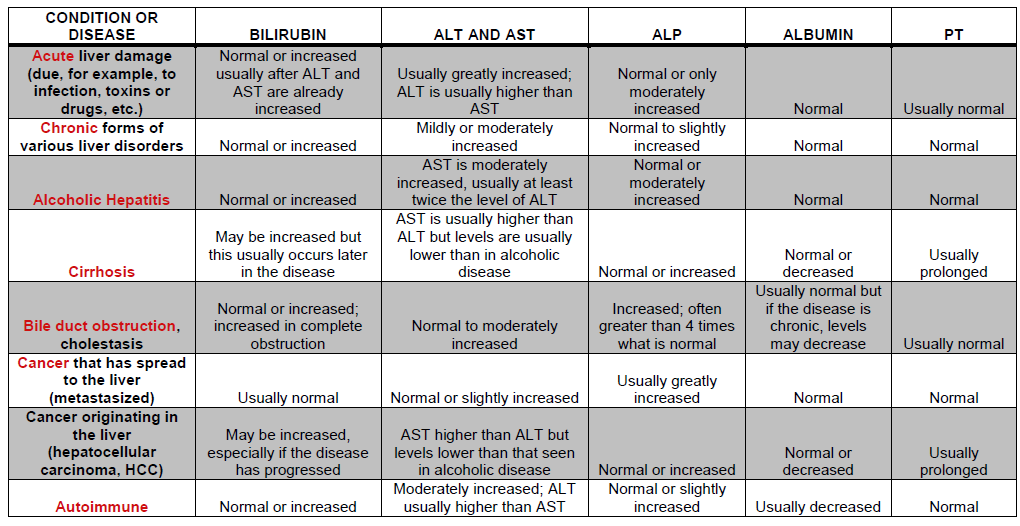
 8 How to reduce the level of Alt in the biochemical analysis of blood?
8 How to reduce the level of Alt in the biochemical analysis of blood?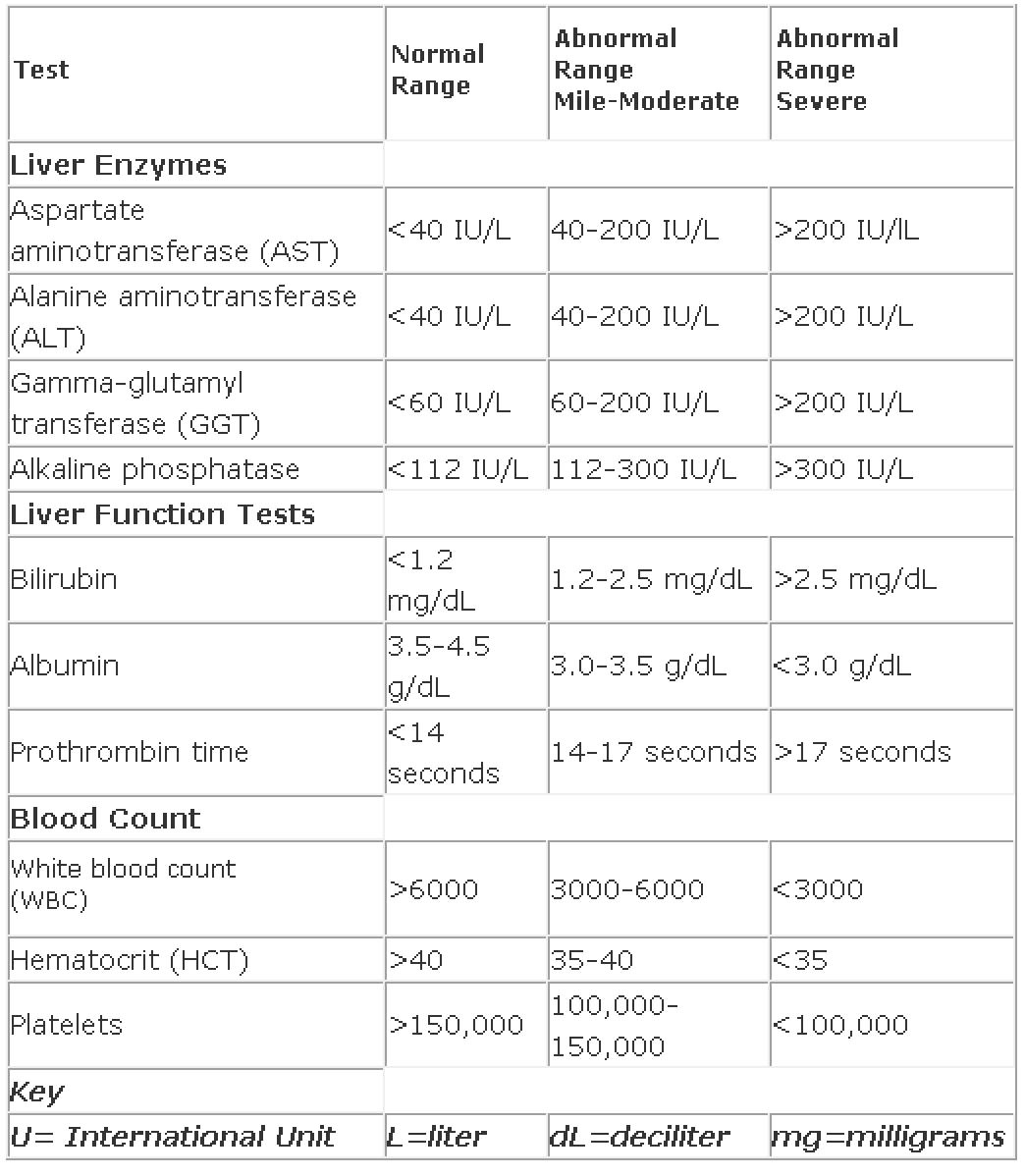
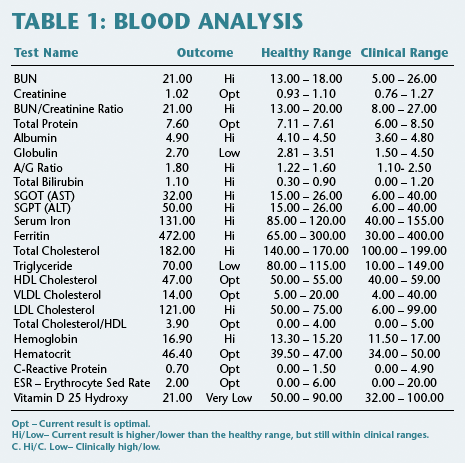 Hepatitis can damage liver cells and increase blood levels of Alt.
Hepatitis can damage liver cells and increase blood levels of Alt.

 When these cells are damaged, ALT enters the bloodstream, which can be determined in a biochemical blood test.
When these cells are damaged, ALT enters the bloodstream, which can be determined in a biochemical blood test. The doctor may prescribe additional tests to identify the disease, as well as recommendations for treatment and lifestyle changes.
The doctor may prescribe additional tests to identify the disease, as well as recommendations for treatment and lifestyle changes. 8 ALT tests: preparation and procedure
8 ALT tests: preparation and procedure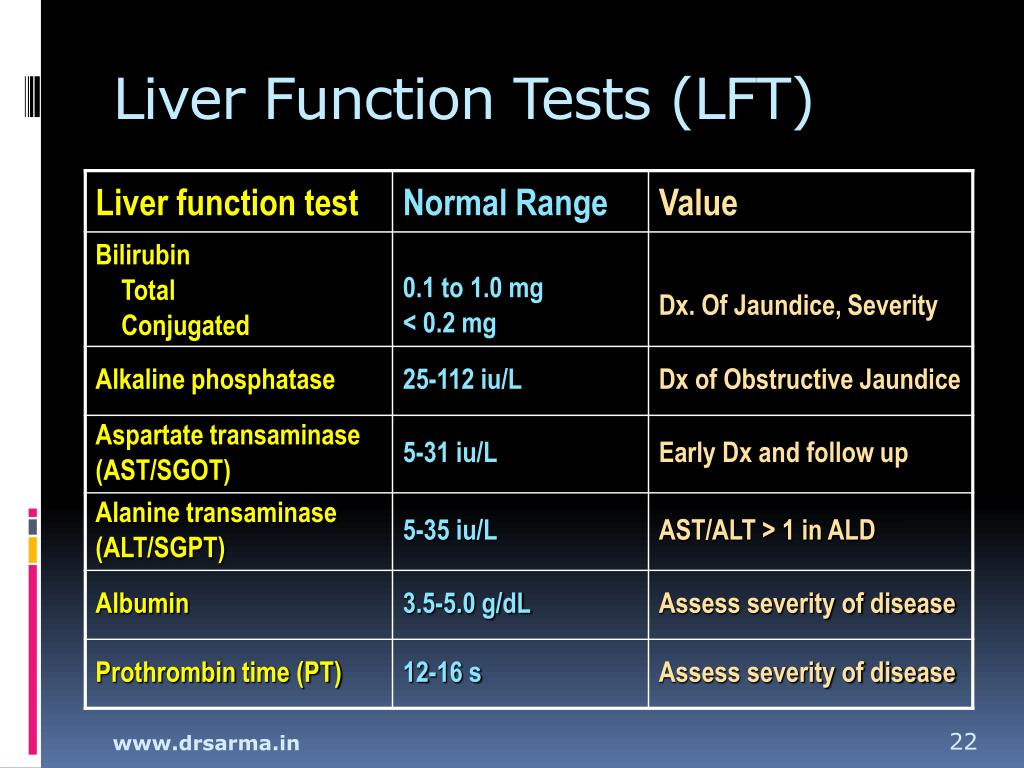 The main thing is not to ignore this symptom and consult a doctor immediately.
The main thing is not to ignore this symptom and consult a doctor immediately.